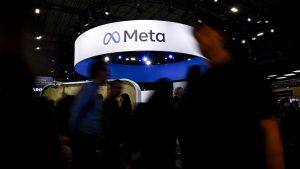The numbers: A resilient U.S. economy grew at a 2.4% annual pace in the second quarter, propelled by steady consumer spending and a rebound in business investment.
Wall Street analysts had forecast a 2% increase in gross domestic product, the official scorecard for the economy. GDP had expanded 2% in the first quarter.
Consumer spending, the main engine of U.S. growth, rose at a 1.6% pace from April to June, the government said Thursday. GDP also got a lift from corporate spending on equipment and structures such as oil rigs and new manufacturing plants.
The economy has shown remarkable endurance this year despite high inflation and rising interest rates, pushing out widespread forecasts of a recession until 2024.
Some economists, including those at the Federal Reserve, even think the U.S. might avoid one altogether. Even though the Fed raised interest rates again on Wednesday, economists at the central bank dropped their forecast for a recession.
Key details: Household spending slowed to a 1.6% annual clip from 4.2% in the first quarter, but it was the biggest contributor to the increase in GDP.
Spending on services rose three times faster than outlays on goods. Americans are spending more on travel, recreation, dining out and the like now that the pandemic is over.
Businesses, another major leg of the economy, ratcheted up fixed investment at a nearly 5% annual pace. That’s the biggest increase in six quarters.
Investment rose at double-digit rates, in percentage terms, for both equipment and structures.
Part of the increase likely stems from a 2021 law passed by the Biden administration that gives subsidies and tax credits to businesses that investment in green energy and technology such as chip making.
Companies also increased inventories slightly after scaling back in prior quarters.
Government spending, meanwhile, grew at a 2.6% rate.
A higher trade deficit acted as a small drag on GDP. Exports fell at a 10.8% annual pace while imports declined by a slower 7.8% clip.
The rate of inflation slowed to 2.6% pace in the spring from 4.1% in the first quarter.
GDP is updated twice after the initial results are published to incorporate new information not immediately available. The next update for the second quarter is due a month from now.
Big picture: GDP is mostly a look in the rear-view mirror, but what it shows is that the U.S. economy has faced fewer roadblocks than expected.
The economy is still expanding in the face of rising interest rates. Most Americans who want a job have one and their wages are going up, too. Not enough to ease the pain of inflation, but enough to help pay the bills and keep the economy out of recession.
Yet the economy is unlikely to speed up any further until inflation falls toward the Fed’s 2% target and the central bank cuts interest rates. It could be a year or more before that happens.
Looking ahead: “The is a strong report, confirming that this economy continues to largely shrug off the Fed’s aggressive rate increases and tightening credit conditions,” said Olu Sonola, head of U.S. economics at Fitch Ratings. “The bottom line is that the U.S. economy is still growing above trend and the Fed will be wondering if they need to do more to slow this economy.”
Market reaction: The Dow Jones Industrial Average
DJIA,
and S&P 500
SPX,
were set to open higher in Thursday trades.
This post was originally published on Market Watch




